When Do I Feed My Tomatoes When They Are Producing
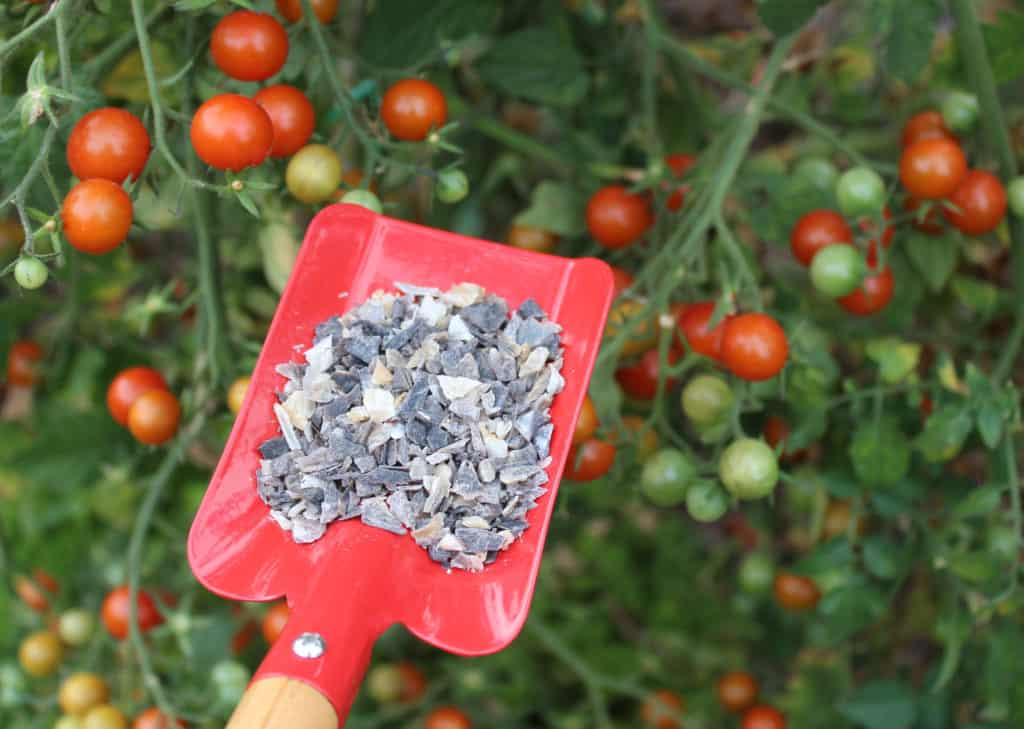
Ask any gardener what their secret to great tomatoes is, and many will say fertilizing.
Not just any old fertilizing routine. A routine that gives the plants exactly what they need at the right stage of growth. If you're looking to get the most out of your tomato plants, you'll need to do the same.
Finding the answers to the many fertilizer questions you may have is almost impossible. Fertilizing is a contentious topic, and everyone has their own opinions.
The truth is, there is no real right answer. Each tomato plant will have different requirements depending on your garden conditions.
The most important thing is to understand the basic fertilizing requirements, and to adjust according to your plant's needs. This will take the mystery out of tomato fertilizing and ensure your plants get exactly what they need – not too little, or too much.
Are Tomatoes Heavy Feeders?
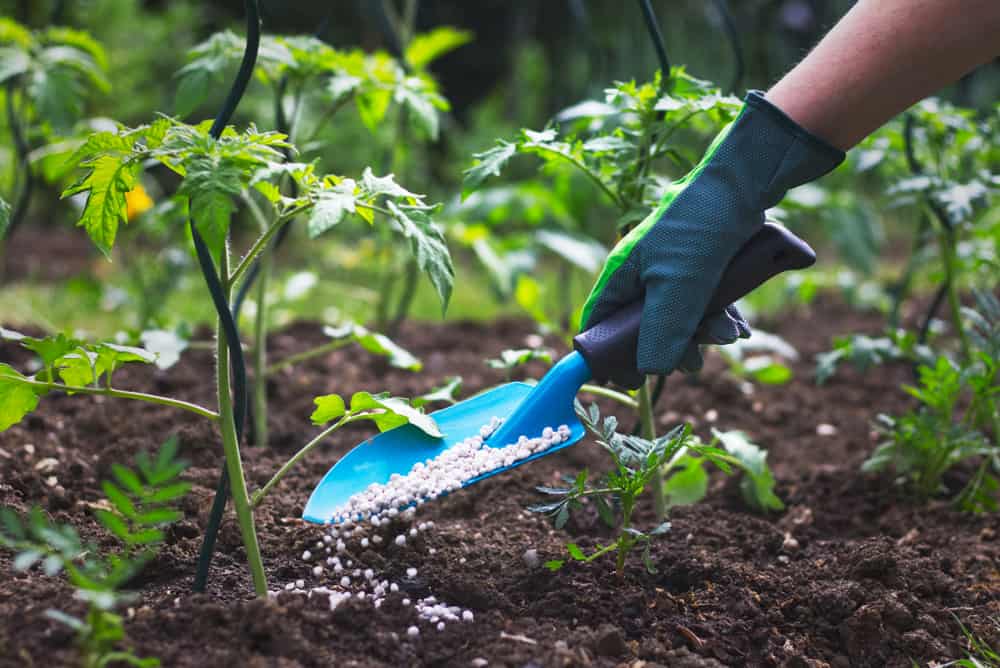
Tomatoes are often labeled 'heavy feeders'. While there is some truth to this, it also leads to a lot of confusion.
Heavy feeder plants are plants that draw more nutrients from the soil than others and need those extra nutrients in order to thrive. Many vegetables and fruits fall into this category. Tomatoes inevitably also fall into this category, as you may have heard.
However, the heavy feeder label leads some gardeners to apply far too much fertilizer. This ends up harming the plants more than helping them.
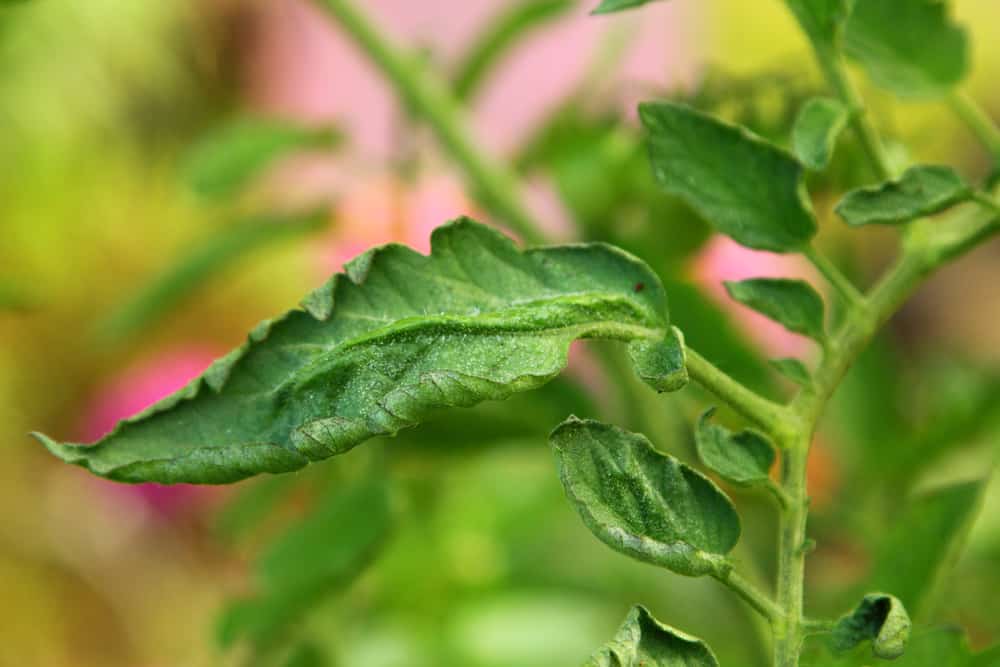
The term 'heavy' is likely where the confusion lies. It does not mean 'heavy' fertilizer application, but rather than the plant will need more than enriched soil at planting to grow well.
Essentially, any plant that needs to be fertilized more than once during the growing season could be classified as a heavy feeder.
Tomatoes do need fertile soil to produce good fruits, but too much fertilizer is never a good thing. Excess fertilizer can burn the roots and lead to many plant problems as a result of a nutirent imbalance. Only give them what they need, when they need it to keep your plants healthy.
So what exactly is that what and when? Let's find out.
When To Fertilize
Tomatoes only need to be fertilized at two stages of growth – soon after planting and just before fruiting.
Some gardeners like to apply the first round of fertilizer while transplanting. They either mix it with the soil or leave it at the bottom of the planting hole. This is certainly an option, but it can increase the risk of fertilizer damage (something you definitely don't want right as the plant is growing).
Transplanted tomatoes need time to adjust to their new homes. A boost of nutrients at this stage can intensify the symptoms of transplant shock. Depending on the fertilizer you use, it could also burn the roots if they come into contact.
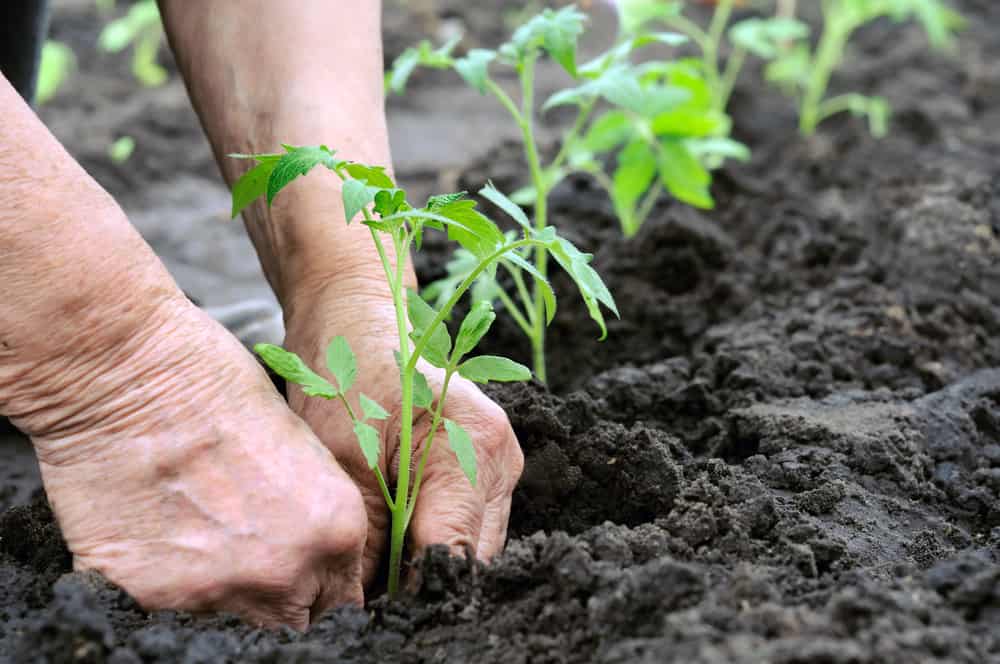
To mitigate this risk, add some compost, bone meal, or worm castings mixed with soil to the bottom of the planting hole. This will give the plants a good start without overloading them.
If you apply a balanced compost and plant it in good soil, it may be enough to keep the plants going until the next fertilizer application.
Alternatively, if your soil is not up to scratch, apply the first round of fertilizer a month after planting. The plant will still be in the early stages of growth, but will have had enough time to adjust and recover from potential transplant shock.
The second round of fertilizer should be applied as the plant starts fruiting. This will give the plant the boost it needs to produce bigger, better fruits before harvesting.
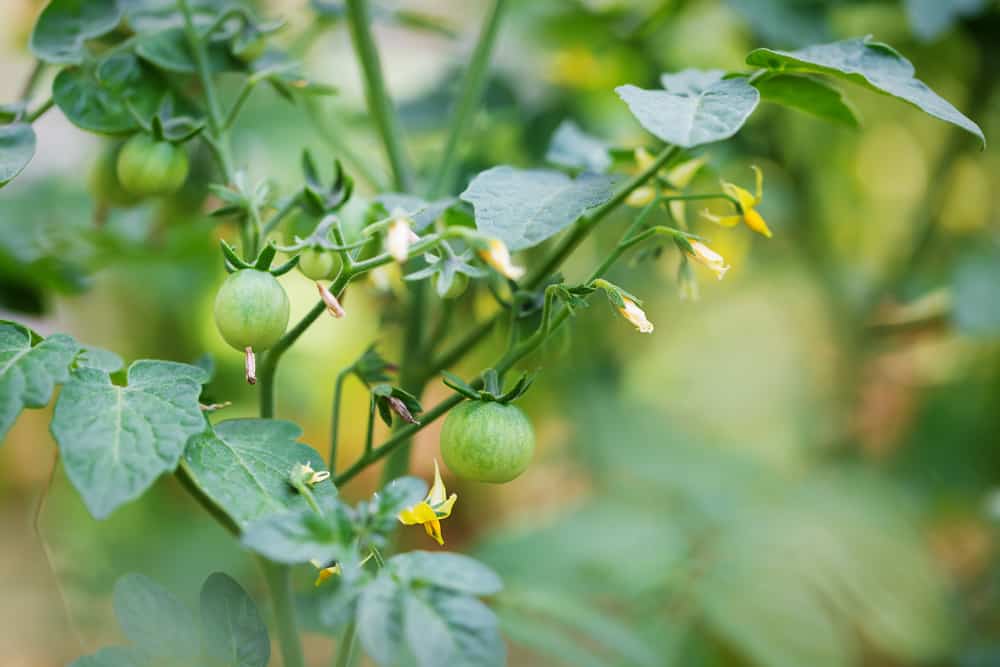
Fertilizing too late in the season can cause problems with the fruits, so it's best to get the second round in early. Stop applying fertilizer once plants begin to fruit heavily.
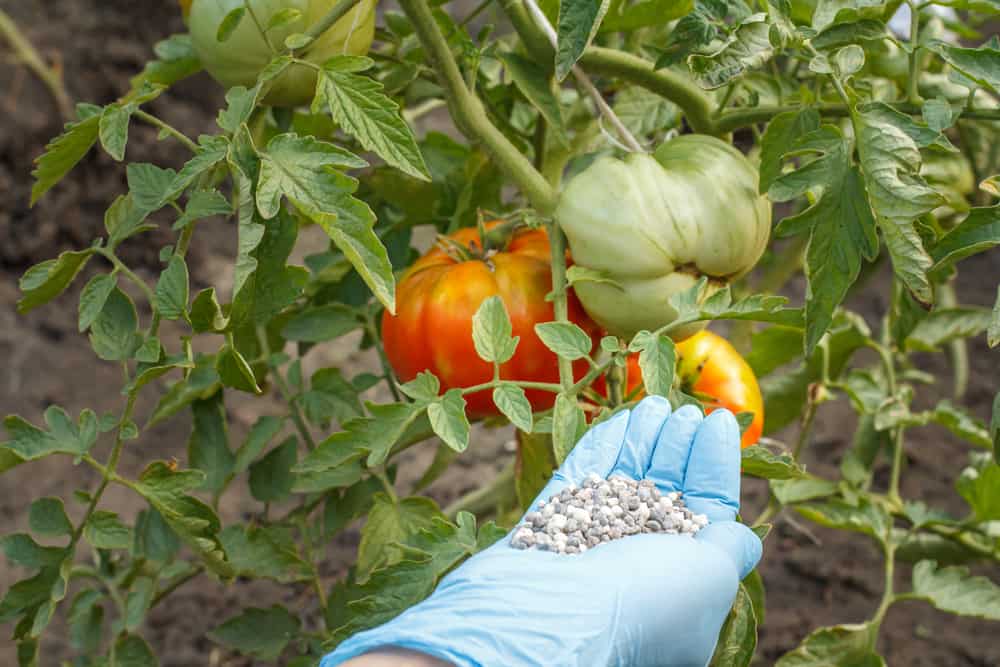
What Fertilizer Should You Use?
Every gardener will have different fertilizer preferences. Some like to make their own, others prefer to purchase.
Whichever route you choose, it's important to understand the NPK (Nitrogen – Phosphorus – Potassium) value of the fertilizer you apply to give the plant what it needs at the right time.
The fertilizer you choose should also contain micronutrients like calcium and magnesium for strong growth and good fruit.
In the early stages of growth, tomatoes need plenty of nitrogen to aid in leaf production. A soil test will determine the levels of nitrogen present. If the soil is higher in nitrogen, apply a balanced 10-10-10 fertilizer, but if it is lower, you may want to opt for a 10-5-5 fertilizer instead.
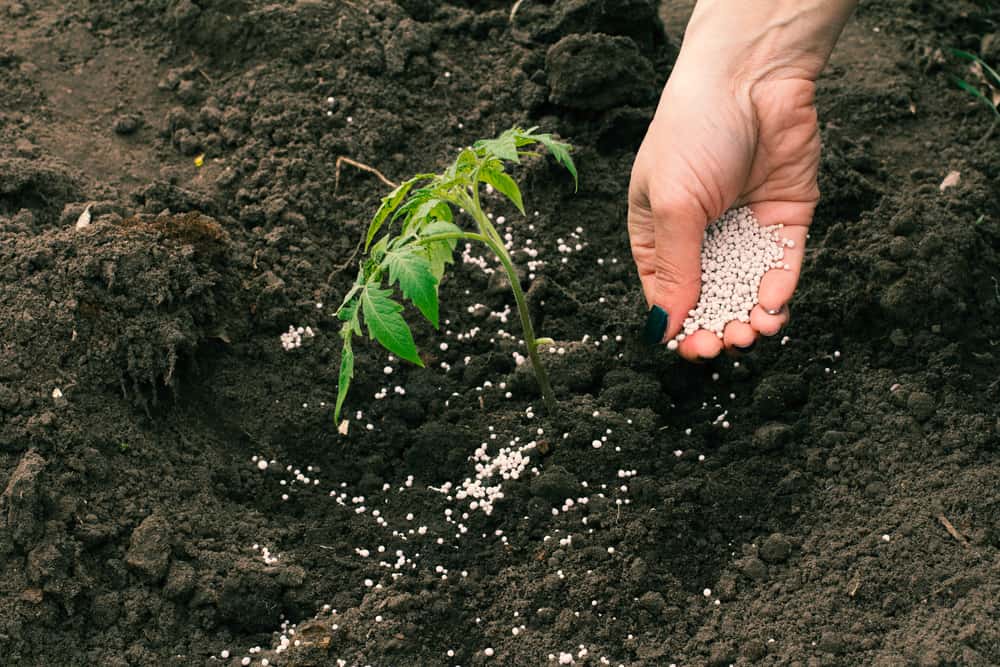
For the second application, just as the plant begins fruiting, the last thing you want to focus on is leaf growth. Choose a fertilizer higher in phosphorus and potassium (5-10-10) to direct the plant's energy toward producing fruits.
Keep an eye on the plant for signs of nutrient deficiency over the season as you may need to adjust your fertilizer to compensate. Combat calcium deficiency with an addition of finely crushed eggshells to the planting hole, and a magnesium deficiency with Epsom salt.
Always conduct a soil test to be sure. Unnecessary application of any nutrient will cause far more problems than you intend to fix.
How To Apply Fertilizer
How you apply your fertilizer will depend on which fertilizer you choose. Whether you make your own or purchase from a nursery, always follow the provided instructions and never use more than the recommended amount.
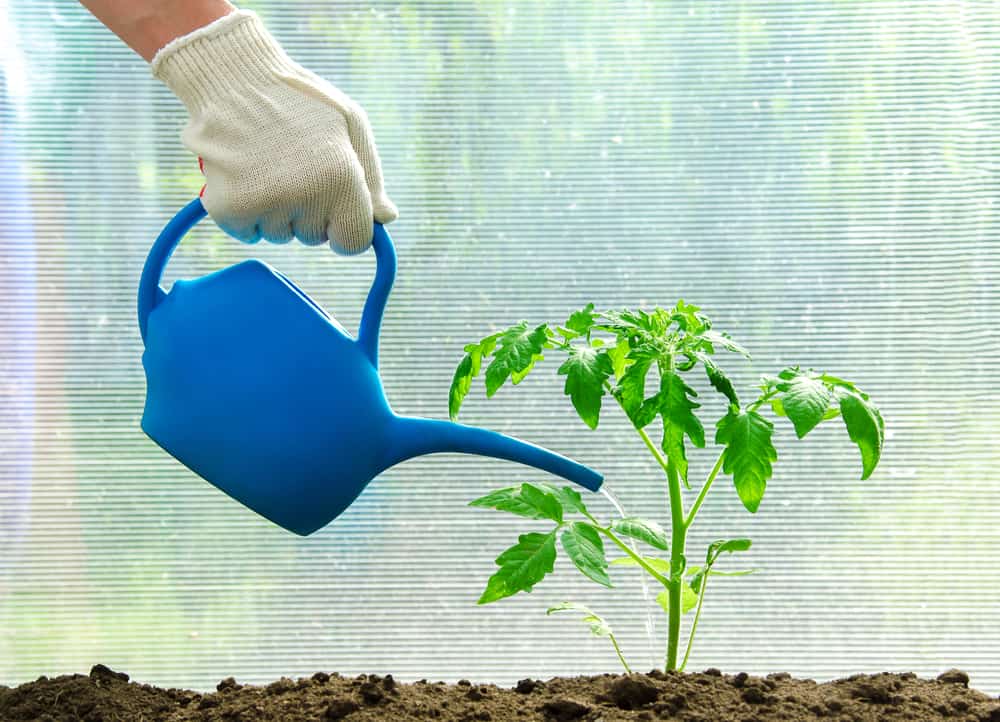
When using a liquid fertilizer, apply the diluted mixture directly to the soil around the plant. Don't water too close to the stem as it may burn the stem and roots. Water slowly to prevent any fertilizer splashing back onto the leaves as this will burn the leaves too.
Dry fertilizers can be sprinkled on the soil around the plant and gently worked in. Again, don't apply too close to the stem. Leave a generous amount of space, but not too far from the plant that it sits beyond the roots. Once worked into the soil, water the plant slowly and deeply.
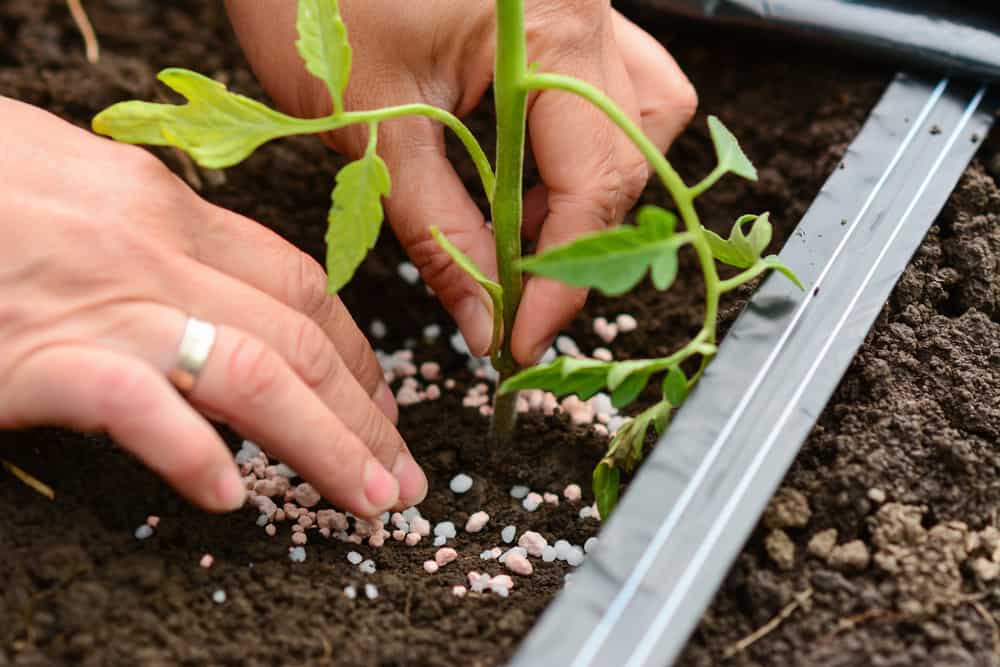
Dry fertilizers are typically labeled slow-release, meaning they release nutrients into the soil in small doses over time, limiting the need to fertilize. If you're using a dry fertilizer at either of the fertilizing stages, one application will be more than enough, unless you notice signs of a deficiency.
The nutrients in liquid fertilizers don't tend to hang around in the soil and get washed away with watering, so it's best to apply every couple of weeks after fruiting depending on the health of the plant.
Always water your tomatoes before fertilizing. If they are slightly underwatered, they will take up the fertilizer much faster than needed, potentially causing damage.
And that's the basics.
As you may have gathered, fertilizer application can vary wildly depending on the state of your plant, your soil conditions, and the type of fertilizer you use. If there's any rule to stick to, it's exercise caution.
Only apply fertilizer when your tomatoes need it. Keep an eye out for signs of deficiency and watch the growth of the plant – they will tell you everything you need to know.
Source: https://www.tomatobible.com/fertilize-tomato-plants/
0 Response to "When Do I Feed My Tomatoes When They Are Producing"
Post a Comment